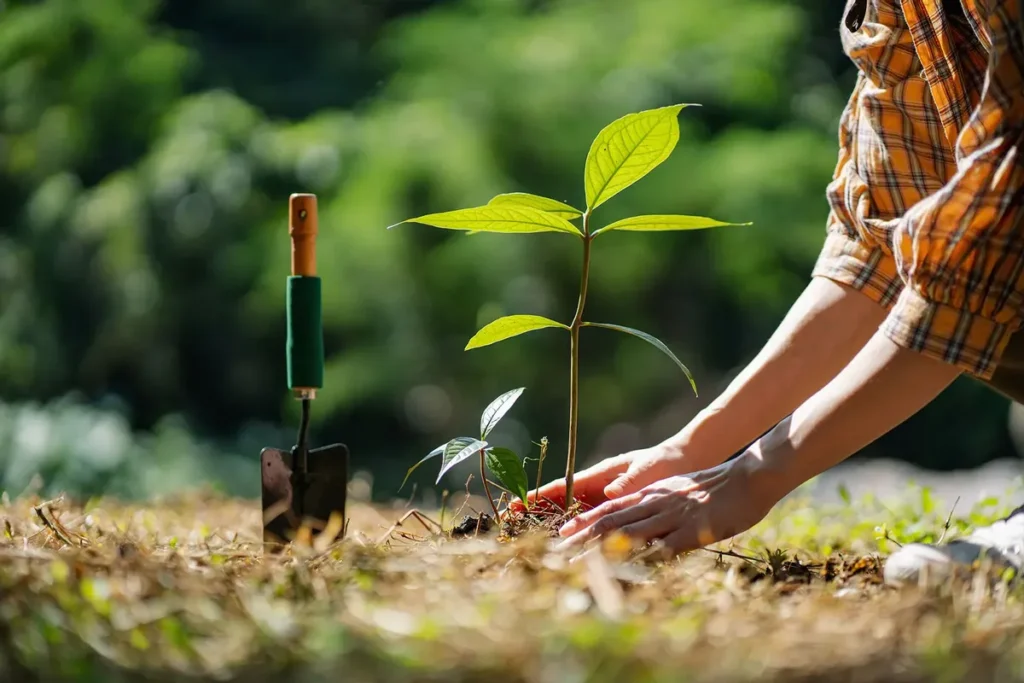Growing a tree in a windy area can be a daunting task, but with the right knowledge and techniques, it’s entirely possible to create a thriving green space even in the face of strong gusts. Rachelle’s insightful article, How To Grow a Tree in a Windy Area (Everything You Can Do), provides a wealth of practical advice for gardeners, nature enthusiasts, and anyone looking to enhance their outdoor environment. In this extended commentary, we’ll delve deeper into Rachelle’s tips, explore additional strategies, and discuss why growing trees in windy areas is not only achievable but also incredibly rewarding. Whether you’re a seasoned gardener or a beginner, this guide will equip you with everything you need to succeed.
Why Growing Trees in Windy Areas Matters
Trees are vital to our environment and well-being. They provide shade, improve air quality, support wildlife, and enhance the beauty of our surroundings. However, windy areas pose unique challenges for tree growth, including:
- Physical Damage: Strong winds can break branches, uproot young trees, or cause long-term deformities.
- Moisture Loss: Wind increases evaporation, drying out soil and stressing trees.
- Nutrient Depletion: Wind can erode topsoil, stripping away essential nutrients.
Despite these challenges, growing trees in windy areas is not only possible but also essential for creating windbreaks, reducing erosion, and fostering resilient ecosystems.
Rachelle’s Key Tips: A Closer Look
Rachelle’s article offers a comprehensive list of strategies for growing trees in windy areas. Here’s a breakdown of her key recommendations, along with additional insights:
1. Choose the Right Tree Species
Selecting wind-resistant trees is the first and most crucial step. Rachelle suggests species like oak, pine, and maple, which have strong root systems and flexible branches. Other excellent options include:
- Evergreens: Trees like spruce and fir provide year-round wind protection.
- Native Species: Locally adapted trees are more likely to thrive in your area’s specific conditions.
- Low-Growing Trees: Shorter trees are less susceptible to wind damage.
2. Plant in Sheltered Locations
Positioning trees near natural windbreaks, such as hills, buildings, or existing vegetation, can significantly reduce wind exposure. Rachelle also recommends creating artificial windbreaks using fences, hedges, or shrubs.
3. Stake Young Trees
Staking provides essential support for young trees until their roots are established. Rachelle advises using soft ties to avoid damaging the bark and removing stakes after the first growing season to encourage natural strength.
4. Mulch and Water Regularly
Windy conditions can dry out soil quickly. Rachelle emphasizes the importance of mulching to retain moisture and watering deeply to promote strong root growth.
5. Prune Strategically
Regular pruning helps trees develop a sturdy structure and reduces the risk of wind damage. Rachelle recommends removing weak or damaged branches and shaping the tree to withstand gusts.
Additional Strategies for Success
While Rachelle’s tips provide a solid foundation, here are a few more strategies to consider:
1. Build a Windbreak
Planting a row of shrubs or trees perpendicular to the prevailing wind direction can create a protective barrier. This not only shields your tree but also enhances the overall landscape.
2. Use Tree Shelters
Tree shelters, or tree tubes, are plastic or mesh structures that protect young trees from wind, animals, and harsh weather. They also create a microclimate that promotes growth.
3. Improve Soil Quality
Windy areas often have poor soil due to erosion. Enrich the soil with organic matter, such as compost or manure, to provide essential nutrients and improve water retention.
4. Plant in Groups
Grouping trees together can create a mutual support system, reducing the impact of wind on individual trees. This technique also fosters a more natural and cohesive landscape.
5. Monitor and Adapt
Regularly check your trees for signs of stress or damage and adjust your care routine as needed. Flexibility and attention to detail are key to long-term success.
The Benefits of Growing Trees in Windy Areas
Despite the challenges, growing trees in windy areas offers numerous benefits:
- Wind Protection: Trees act as natural windbreaks, reducing wind speed and protecting homes, gardens, and crops.
- Erosion Control: Tree roots stabilize soil, preventing erosion and preserving fertile land.
- Wildlife Habitat: Trees provide food and shelter for birds, insects, and other wildlife.
- Aesthetic Appeal: A well-planned tree planting can transform a windy, barren area into a lush and inviting space.

How This Relates to Outdoor Activities
Growing trees in windy areas isn’t just about gardening—it’s also about enhancing outdoor experiences. Here’s how:
- Camping & Outdoor Living: Trees create sheltered, comfortable spaces for camping and outdoor activities.
- Hiking & Trekking: Windbreaks along trails make hiking more enjoyable and less strenuous.
- Nature Photography: Healthy, wind-resistant trees provide stunning backdrops for photography.
- Outdoor Fitness & Wellness: Trees improve air quality and create serene environments for exercise and relaxation.
Final Thoughts: A Greener, More Resilient Future
Rachelle’s article is a valuable resource for anyone looking to grow trees in challenging conditions. By following her advice and incorporating additional strategies, you can overcome the obstacles of windy areas and create a thriving, resilient landscape.
Growing trees in windy areas is more than just a gardening project—it’s an investment in the environment, the community, and the future. So, roll up your sleeves, grab your shovel, and start planting. With patience, care, and a little creativity, you can turn even the windiest area into a green oasis.
-
15 Easy Breakfast Ideas That Save Time
Spread the love15 Easy Breakfast Ideas That Save Time In today’s fast-paced world, mornings can be chaotic — between getting ready for work, managing kids, and planning the day ahead, breakfast often takes a back seat. But as nutritionists always say, breakfast is the most important meal of the day. It fuels your body, jump-starts…
-
20-Minute Air Fryer Recipes Everyone’s Loving
Spread the love20-Minute Air Fryer Recipes Everyone’s Loving In today’s fast-paced world, we all want quick, healthy, and delicious meals without spending hours in the kitchen. That’s exactly where the air fryer comes in — a game-changing kitchen gadget that’s making cooking easier, faster, and healthier than ever before. From crispy chicken wings to perfectly…

